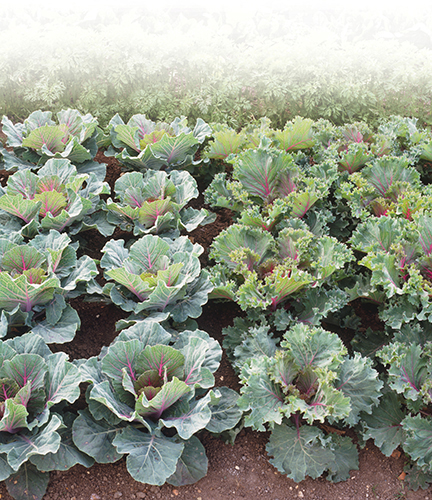
Farmers have known about the benefits of crop rotation for centuries. Using the rotation principle in a vegetable and fruit garden will result in higher yields without excessive use of fertilizers, and it helps to prevent garden pests and fungal diseases, too.
If you plant the same varieties in the same spots every year, you will deplete the soil because the plants will always remove the same nutrients from the ground. Sooner or later, those nutrients will run out and crops will cease to thrive. More importantly, diseases will build up in the soil.
A planting cycle gives soil a well-needed rest so that it can regenerate.
• The more time that passes before you grow the same plant in the same location the better: A 4-year cycle is ideal.
• Crop rotation often significantly reduces the need for fertilizing, as some plants replace nutrients in the soil that other plants need. The roots of bean and pea plants release plenty of nitrogen when they rot, for example, which encourages growth in cabbage plants the following year.
• Rotating crops also prevents pests and fungal diseases that spread in the soil. If the fungus spores and insect larvae can’t locate the proper host plants, they die. For that reason, return cucumbers, tomatoes and peas to the same spots only after 2 years or more, and onions after 3 years.
• If a variety of cabbage is afflicted with club root, wait 7–8 years before replanting cabbages in the same vegetable bed.
• You can even rotate crops in a small garden with just one vegetable bed. Simply rotate the plant varieties by rows in subsequent years.
When planning for crop rotation, consider the nutrient requirements of each plant. Some crops grow abundantly and quickly and use up plenty of nutrients—these plants need strong fertilizer. Other plants require fewer nutrients, grow more slowly and need more moderate fertilizing. Plants with low nutrient requirements just need a little compost.
• Follow a plant that uses lots of nutrients with a moderate nutrient consumer and finally, in the third year, by one with low nutritional needs.
• Use a journal to plan crop rotation, keeping a record of precisely what, when and where plantings were done.
• For a well-planned crop rotation sequence, begin planting with vegetables in the cabbage family, followed by legumes, tubers and plants from the potato family (such as eggplant, chilies, peppers and tomatoes) and, finally, by bulbs such as leeks, garlic or onions.
START YOUR CROP ROTATION cycle by PLANTING cabbages.